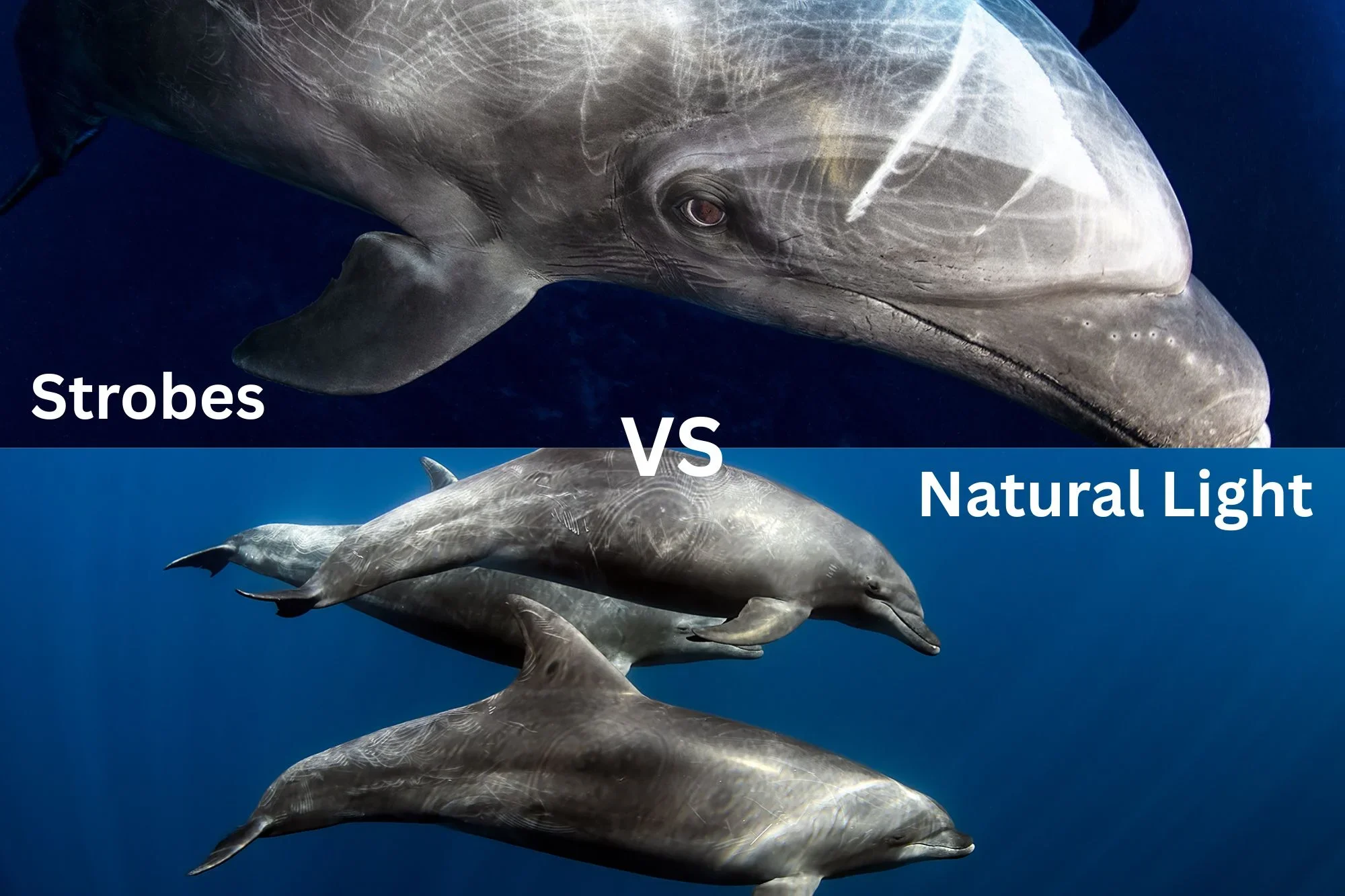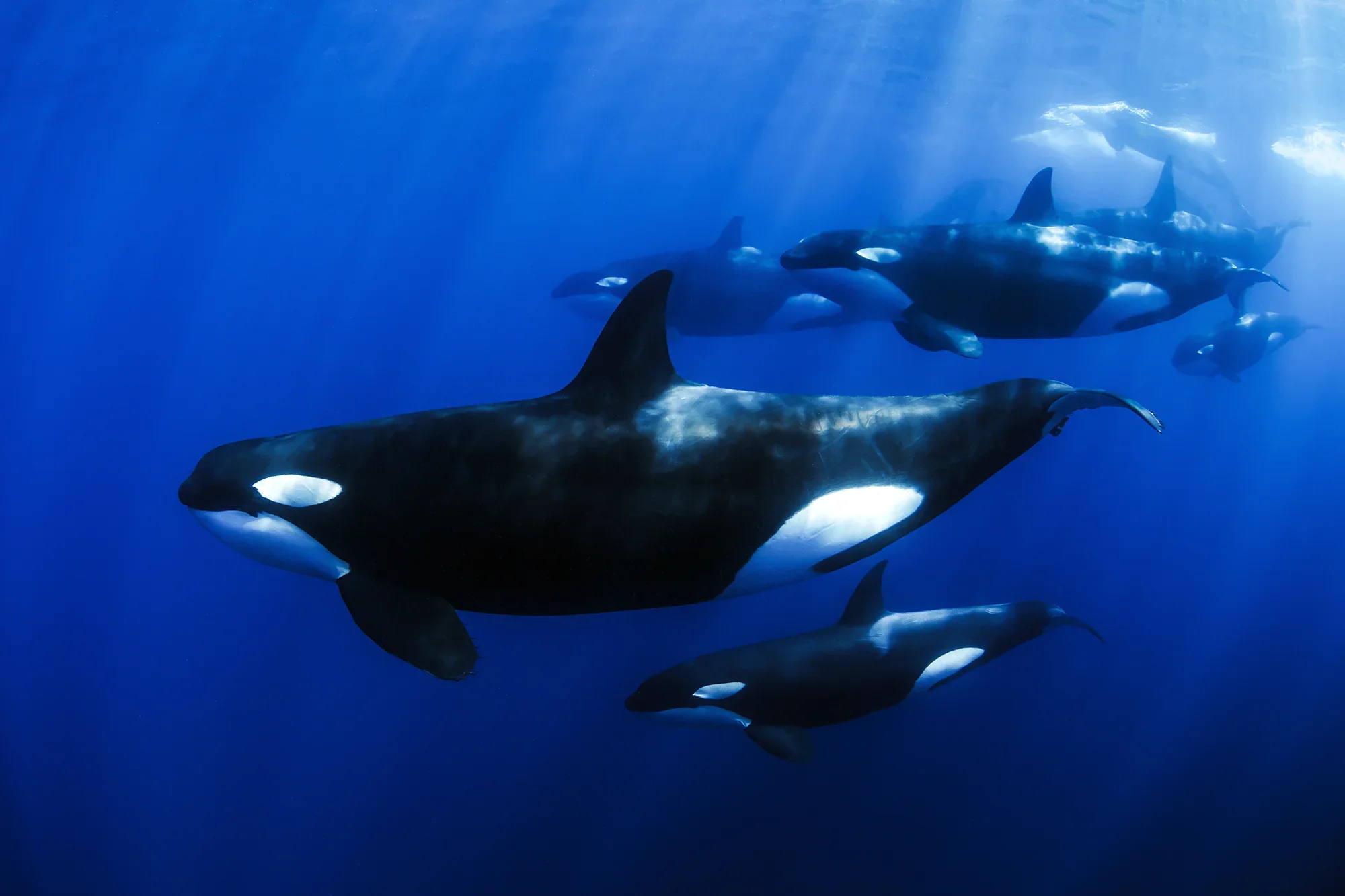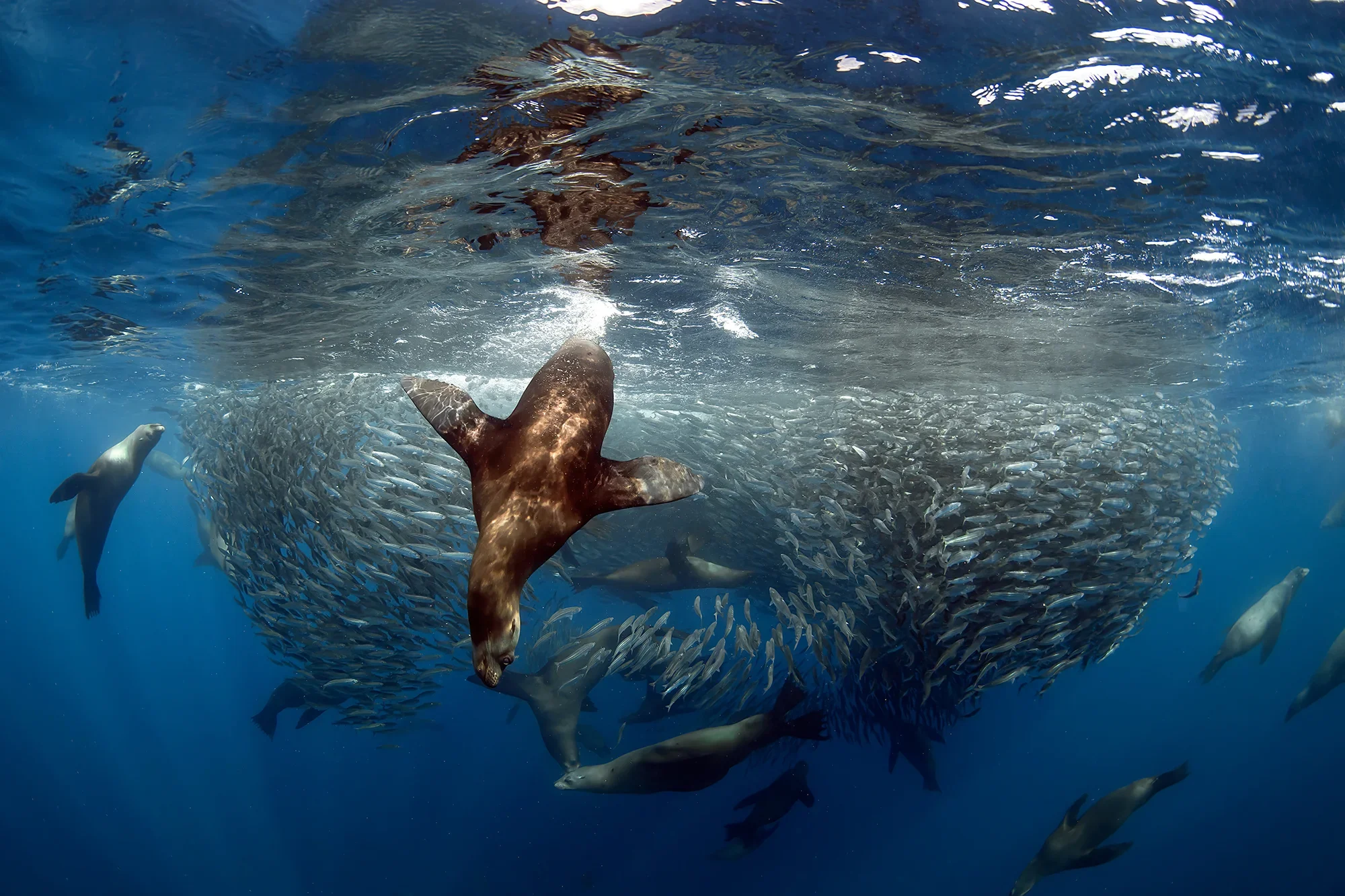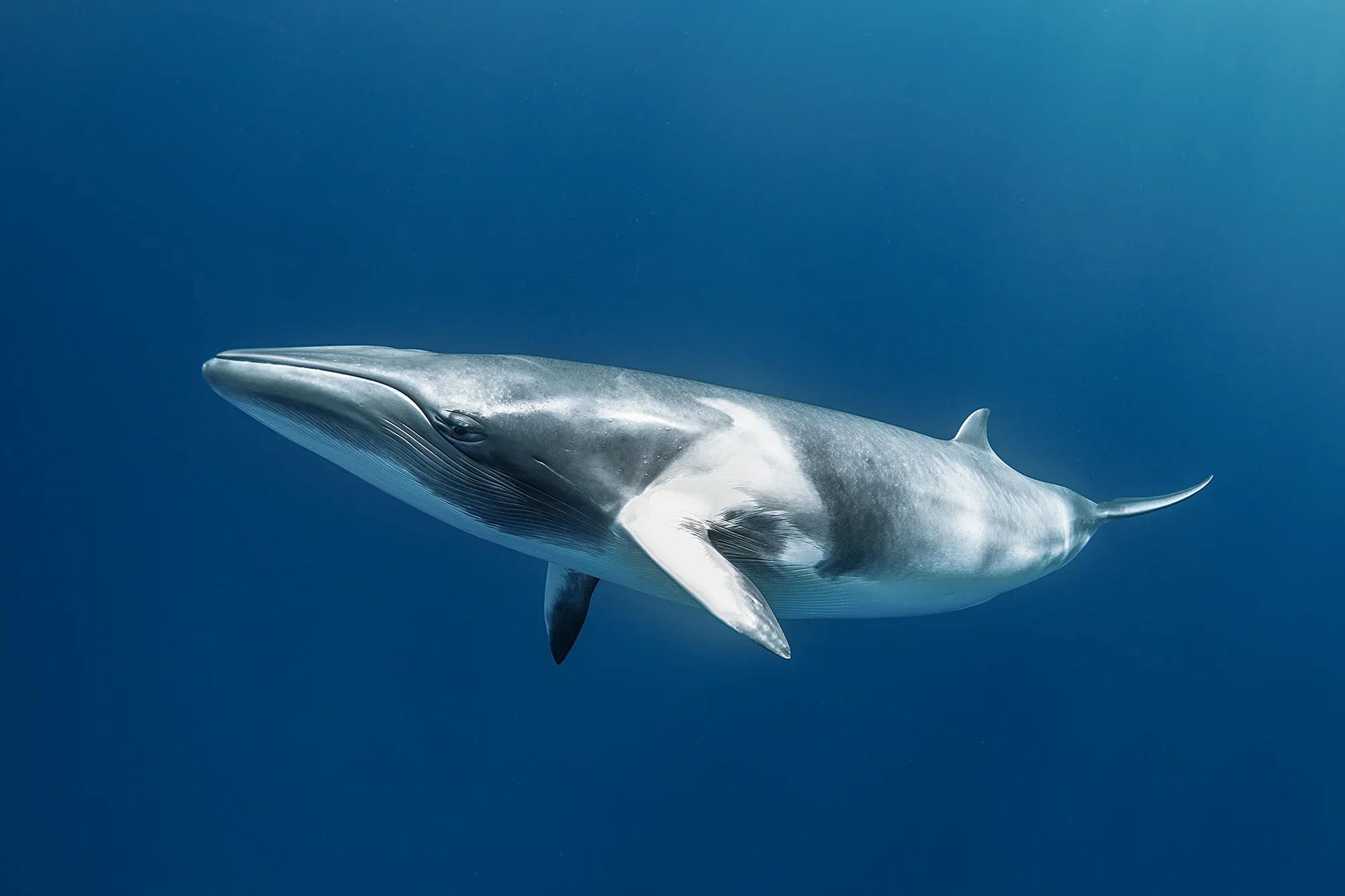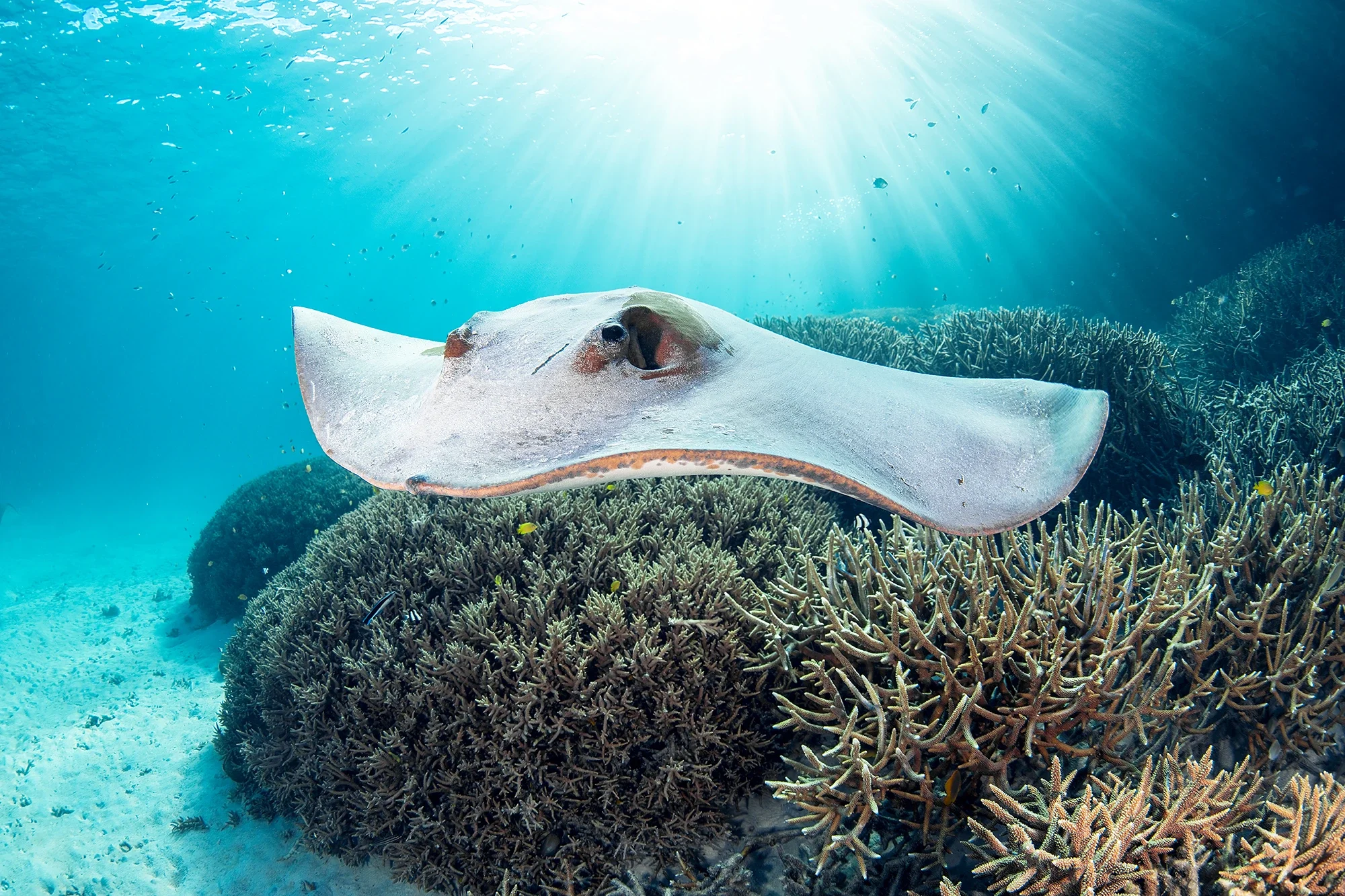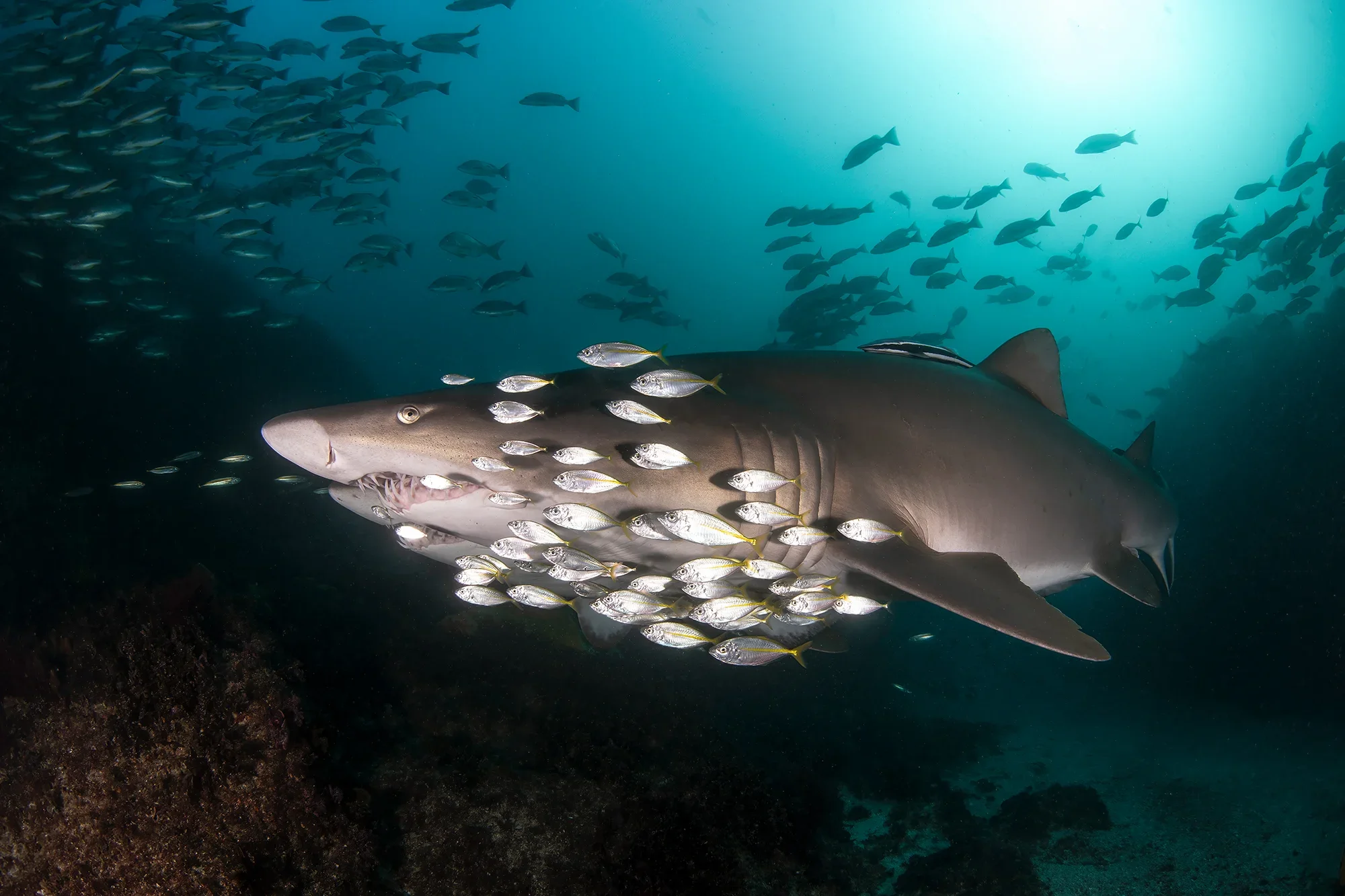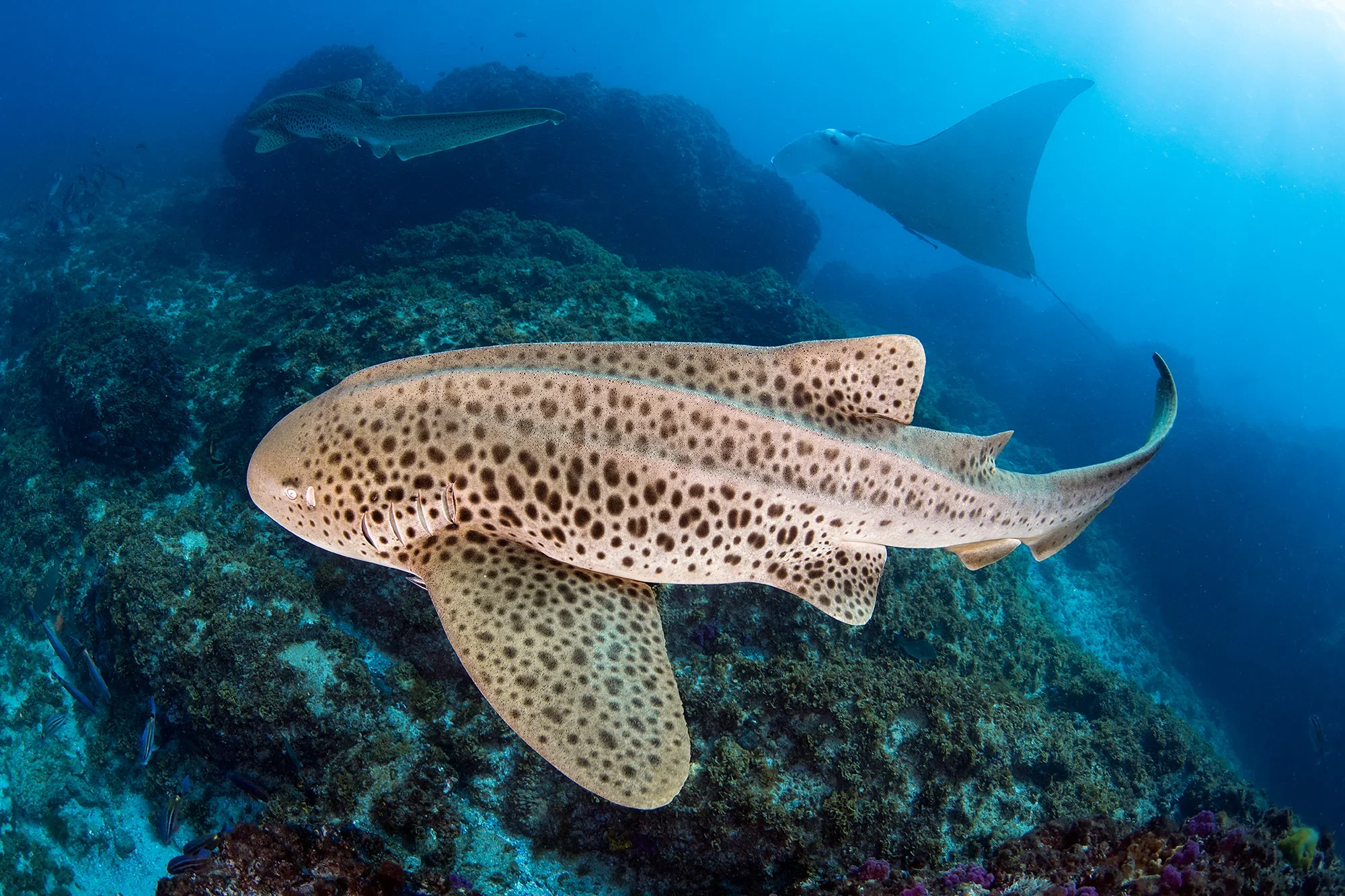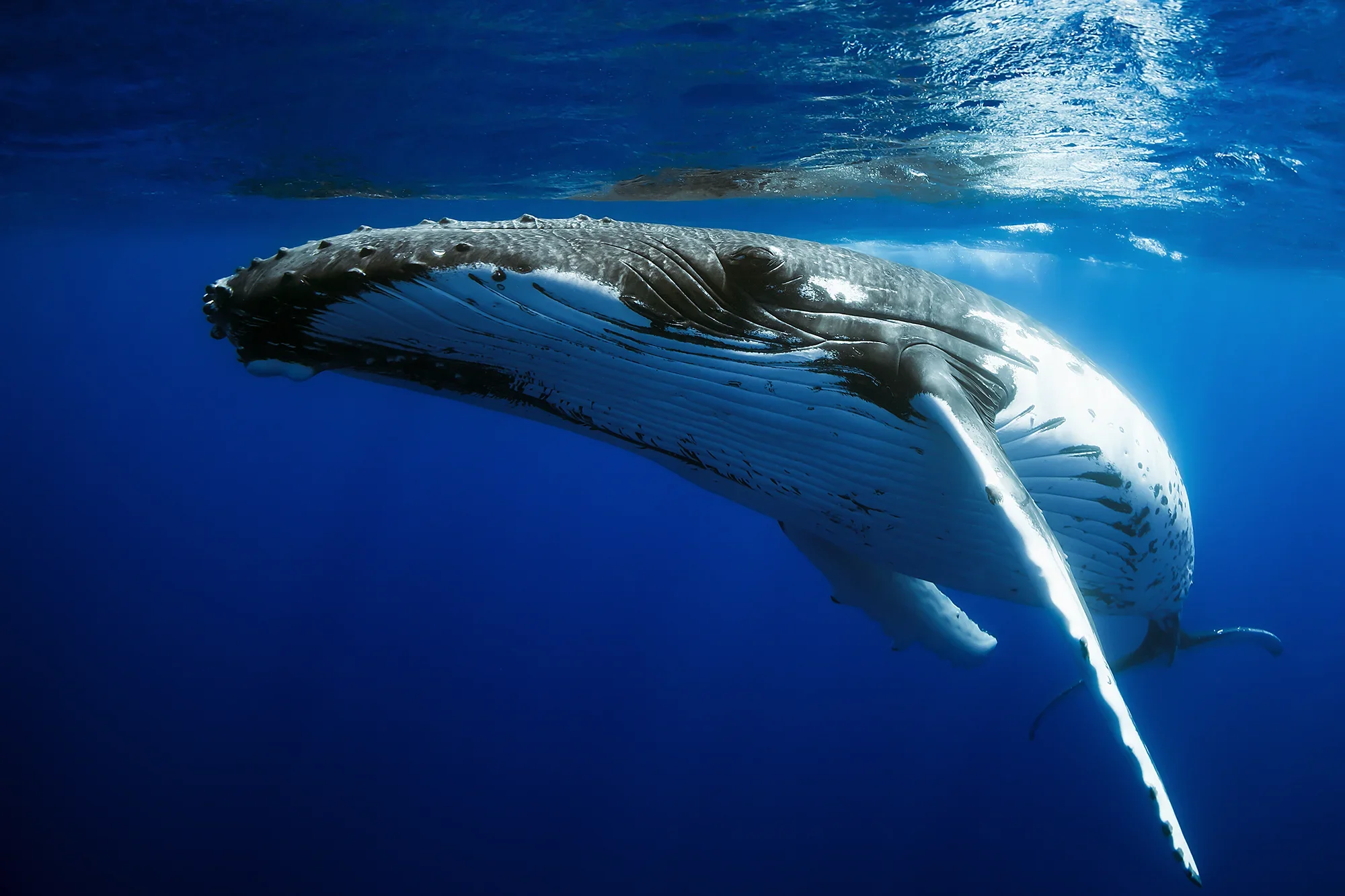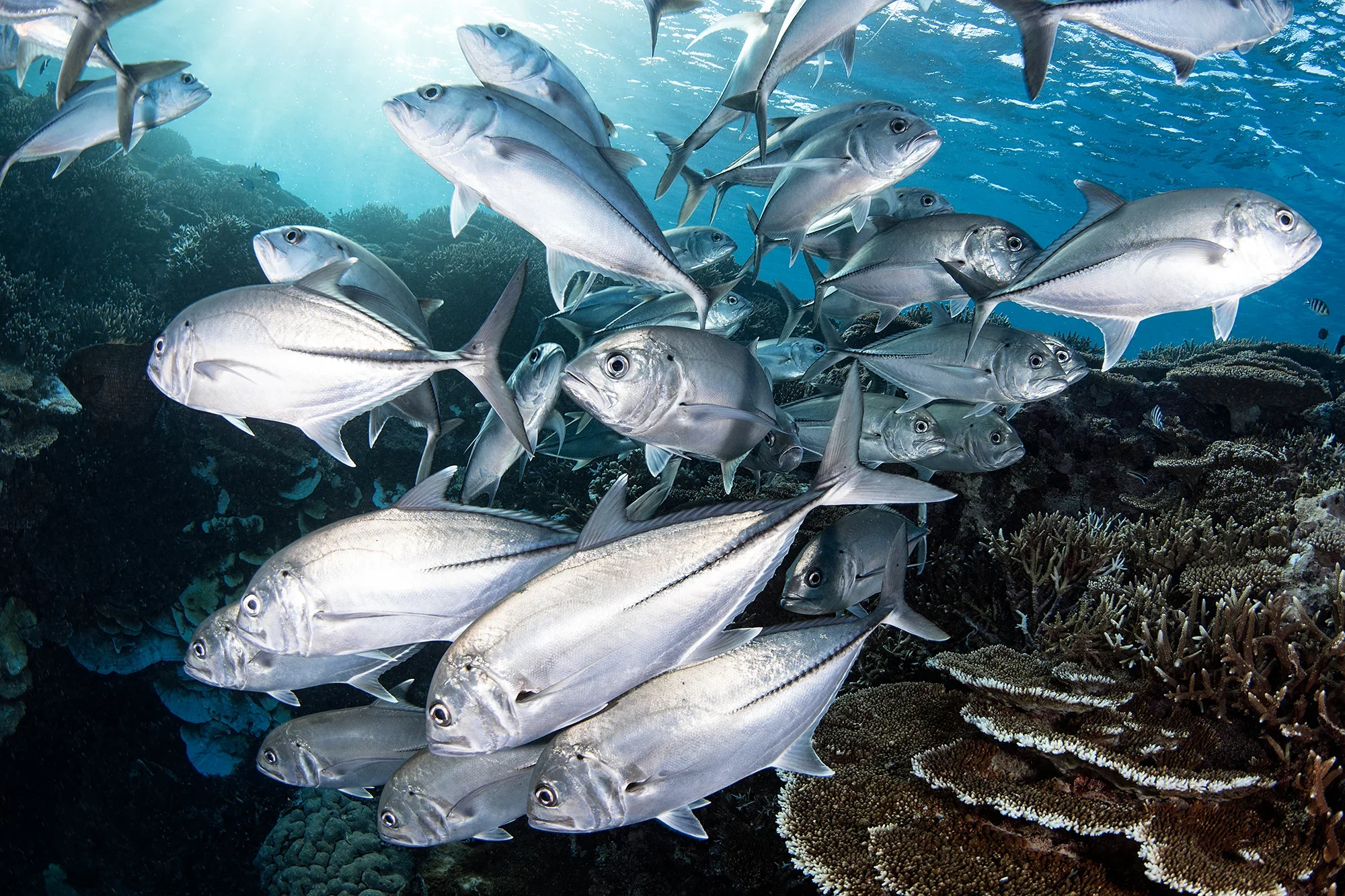Natural Light vs Strobes in Underwater Photography
Lighting is one of the most important factors to consider when it comes to capturing impactful imagery. It’s often what separates amateur and professional photos, playing a critical role not only in enhancing exposure, colour, focus, and image sharpness, but also in adding dramatic effect to a composition. When shooting underwater, you have two options with regards to underwater lighting — natural light, which involves relying solely on sunlight, or strobes, which involve adding a burst of artificial light to the equation. I am here to tell you both methods have a place in the world of underwater photography, and the key is knowing when and how to use each technique effectively. In this article, we take a deep dive into natural light vs. strobes to better understand when and why you might choose one over the other.
Shooting with Natural Light
Advantages of Natural Light
Natural light photography offers a number of advantages, primarily related to enhancing your speed, agility, and manoeuvrability in the water. The benefits of keeping your underwater system as small and compact as possible cannot be overstated and will often allow you to position yourself for specific shots that you simply wouldn’t be able to achieve with a set of large, cumbersome strobes.
This form of lighting is also much better equipped to handle those fast-paced interactions that involve having to get on and off a boat quickly, such as with subjects like bait balls, dolphins, or in some instances, whales. When working with such species, you want to be able to quickly swim back to the boat, pass your gear up, and prepare to get back into the water at a moment’s notice.
Another advantage that is less frequently talked about is how much more forgiving natural light photography can be. When using strobes, you are not only tasked with handling more variables, but you are also required to get quite close to your subject, and if you don’t quite manage this, the image is almost always rubbish. In other words, the window for success with strobes is much smaller. When working with natural light, you have the benefit of increased flexibility with regards to the distance you are from the subject, as well as a greater chance of capturing a usable image.
Limitations of Natural Light
There are two main limitations when it comes to using natural light. The first is, of course, the weather and conditions. Simply put, if the sun is not shining or the water is dark and green, you are going to be forced to use less-than-ideal camera settings to maintain adequate exposure. This is also true if diving at depth, typically below ten meters, when ambient light begins to become scarce.
The second main limitation to using only natural light is being somewhat restricted with regards to the direction you are shooting relative to the sun. If your goal is a typical image where your subject is sufficiently exposed and tack-sharp, you will need to compose keeping the sun behind you. If you do shoot towards the sun, you will see heavy shadowing appear on your subject, and your photo can begin to lack vibrancy.
Best Conditions for Natural Light Photography
If shooting with natural light, you want a clear, sunny day and a shallow dive site. The more light you have to work with, the better your images will be. This includes being able to use favourable camera settings, capture more interesting compositions, produce well-exposed, vibrant photos, and notably improved sharpness.
Tips for Maximising Natural Light
When shooting with natural light, aim to keep the sun at your back with the aim of maximising the amount of light illuminating your subjects. For this reason, it can be advantageous to avoid shooting during the middle of the day and instead plan morning or afternoon sessions.
Shooting with Strobes
Advantages of Strobe Lighting
If you’re someone who prioritises not only maximising the “true” colours of the underwater world, but also capturing every intricate detail and texture, strobe lighting is a must. Because strobes add a certain degree of bulk to your system, they are best suited for scuba divers or freedivers who have a certain degree of fitness and feel capable of lugging them around for hours at a time in the ocean, but the resultant images often make it well worth the effort.
A quick burst of light works wonders underwater and sees a significant enhancement to not only exposure and colour, but also overall detail and contrast. Strobe lighting also allows for significantly more types of compositions, including being able to shoot directly toward the light for coveted sunburst imagery. Motion blur, black-background portraits, and Snell’s window are all made possible when using strobes as well. Simply put, using strobes will enhance colour, detail, texture, and allow for a greater range of potential compositions and image types.
Limitations of Strobes
Strobes are large, heavy, and create a lot of drag underwater. While not so much of a concern when scuba diving, they certainly add a level of difficulty when freediving, particularly in the presence of a moderate to strong current.
Strobes also introduce a number of different variables that you will need to control with each and every shot. You must be acutely aware of your strobe power and positioning relative to your subject and the surrounding environment and conditions. This narrows the window for a successful image, and even small deviations can result in a ruined image full of backscatter.
Best Situations for Using Strobes
Like natural light photography, the best conditions for strobes are a clear, sunny day with good visibility. However, you will find it is still possible to capture impressive images when ambient light is limited, such as when it’s overcast or when at depth. What’s more important for strobes is that the water is particle-free. If the water column is full of small specks of debris or suspended sand, your images will be full of backscatter, rendering them unusable.
Furthermore, strobes are particularly beneficial when you know you will be able to get nice and close with calm, curious, and willing subjects. Turtles, schooling fish, or baited shark dives make for amazing participants for strobe photography.
Tips for Effective Strobe Use
It is important to remain acutely aware of your strobe power and positioning at all times, as even small deviations can result in “missing” a shot. Develop a habit of constantly reviewing your images and making the necessary adjustments to ensure you are ready the next time you come across an interesting subject.
Strobe lighting is most effective when shooting with a wide-angle lens such as an 8–15mm fisheye or 16–35mm rectilinear. Your aim should be to get nice and close to your subject to appropriately expose it. Remember to keep strobe power low to avoid unwanted hotspots, excessive backscatter, and, most importantly, to avoid agitating your subject. If a subject appears bothered by the flash, always be willing to move on to the next subject.
Choosing Between Natural Light and Strobes
Depth
As a general rule, if shooting at or below fifteen meters, it is recommended to use strobe lighting or at least some form of external light source. Beyond fifteen meters, your images will be dominated by blue and green-washed tones, and you will be forced into working at less-than-ideal camera settings. If shooting in shallow waters, ask yourself if you’re best served being as agile and manoeuvrable as possible, or if you are aiming to maximise colour, sharpness, and detail. If it’s the latter, consider strobes. If it’s the former, consider sticking to natural light.
Subject Matter
Some animals in the ocean are not appropriate to shoot using strobes, or any form of external light for that matter. Whales, orcas, and some deep-water species should only be photographed using natural light to avoid potentially harming or startling the animal. Furthermore, strobes are often more of a hindrance for such encounters for the reasons mentioned above. If working with large aquatic species, always check the rules and regulations in the area. For such encounters, you will almost always be best off sticking to natural light.
Personal Preference
Ultimately, the decision to use strobes or natural light will come down to a matter of personal preference. Some photographers prefer the aesthetic of a strobe-lit image, while others prefer a softer, more “scenic” shot captured using natural light. Review the work of photographers you admire and consider what’s right for you and what you are trying to achieve!
My Personal Recommendation
Over the years, I have often been asked which method is best — natural light vs. strobe-lit photography — and my answer has always been the same. Disregarding any practical or ethical considerations, I will always have my strobes connected to my housing. Speaking from a purely subjective point of view, I feel that the very best underwater images are achieved by combining the two forms of lighting for the best possible results. For example, using your strobes to perfectly illuminate your subject, while relying on the ambient light to selectively enhance the background. This is not always an easy task, but when the two forms of lighting feel like they are working in harmony, the results are very rewarding!
Final Thoughts
The decision of strobes vs. natural light will always be a difficult one for many, but I hope this article helps sway you one way or another depending on your goals and aspirations as a photographer! Ask yourself which subjects you enjoy working with most, and then consider whether you will be best served prioritising speed, agility, and manoeuvrability, or close-up interactions with enhanced colour, details, and image sharpness.

